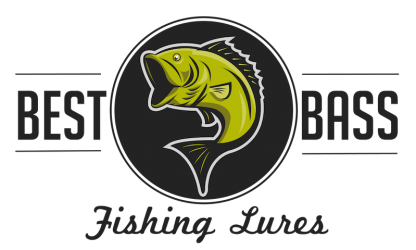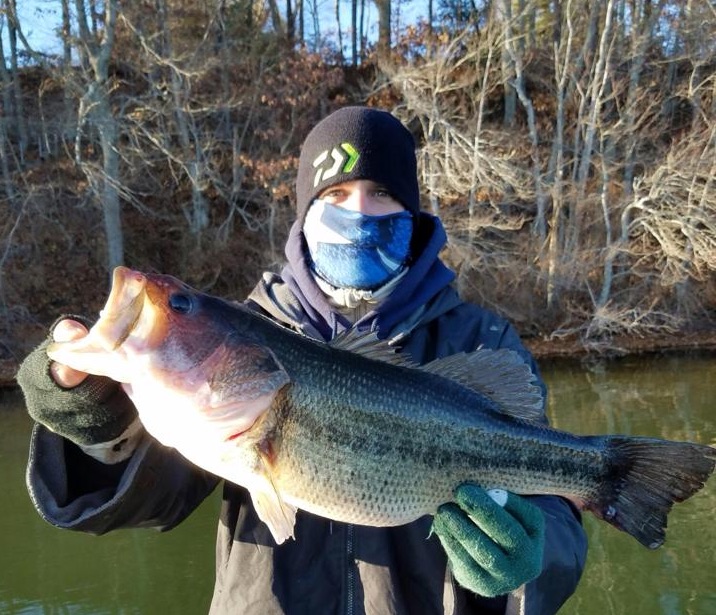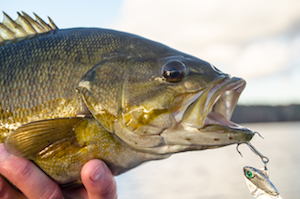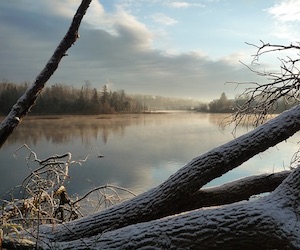The winter brings on tough conditions that can leave anglers feeling cold and without a bite. Most people, especially novice fishermen, think that bass fishing season is over once winter sets in. But with the right winter bass fishing lures you can keep catching them until it’s time to break out the ice fishing equipment.
It’s no secret that bass feed far less aggressively in the winter. The optimal water temperature for active bass is north of 55 degrees.
The winter air cools water temperatures dramatically. In the northern parts of the country they can dip down in to the 30’s and 40’s before turning to ice.
But no matter where you’re located, the cooler than normal water temperatures that come with winter make bass lethargic. And their metabolisms slow down substantially. Bass can survive an entire month from eating a single baitfish when they get in to this lethargic winter mode.
Their low level of feeding activity has to due with how little energy they’re expending. If they’re not burning off energy they don’t need as much food to replenish it.
Energy conservation becomes a main focus for bass in the winter. When deciding whether or not to eat, a bass will consider how much energy it is willing use to pursue prey, and if it’s worth burning the energy or not. For this reason, slow moving baits make the best winter bass fishing lures.
Best Cold Water Bass Lures
Patience and slow retrieves are the two essentials for bass fishing in winter. Slow may even be an understatement. There are times you could be casting a lure out and retrieving it for five minutes or longer to get a bite.
Bass might watch a bait remain still for a full minute or longer before deciding to strike. Some lures perform better than others when worked at these slow speeds. Below are three of the best of them.
Jerkbaits
The ultimate cold water bass lures are jerkbaits. More specifically, hard body suspending jerkbaits like a Rapala X-Rap and soft body jerkbaits like a Zoom Superfluke. Both models work in the same way, they are “jerked” between pauses, causing the bait to dart in different directions.
They’re best known for getting reaction strikes from bass. For hard suspending jerkbaits, a bass will watch it suspended in the water column and as soon as the bait darts in a direction the bass’s reaction is to attack it.
For a soft jerkbait, the reaction is a result of a jerk while the bait is naturally sinking, or while it’s at rest on the bottom. A big advantage of soft jerkbaits is they can be rigged weedless.
Jigs
Jigs are excellent lures for working the bottom slowly while giving off an enticing presentation. And that’s exactly what you want to do with a jig in cold water, let it sink to the bottom and sit there.
After some time, drag the jig slowly along the bottom and then let it rest again. Also pop the jig up off the bottom and allow it to fall back down. You want to mix up these presentations to see what triggers a strike.
The colder the water the less you want to move the bait, so the periods of rest will vary with water temperature. But getting bites or not getting bites will determine what the correct length of time is.
You can leave the jig at rest because the trailer and skirt of the jig will move slowly with the water and create a lifelike presentation. How long you let the jig sit is an adjustment you will have to make, but twenty to thirty second pauses between drags is a good start. This method is especially effective with stand up style jigs, like a BiCO Jig.
Blade Baits
Using a blade bait like a Heddon Sonar is a very effective tactic in extremely cold waters. These baits work for catching largemouth, but are also known for being deadly smallmouth bass lures.
The best technique to use with a blade bait is to let it sink to the bottom and let it rest for a bit. Then you want to jerk the rod tip up and make the bait dart and vibrate upward. But only for a foot or two then stop and let it flutter back down to the bottom. The continue to repeat this process.
This technique can also be used at different depths in the water column. Just let the bait flutter down a couple feet then pull it back up. This yo-yo action in the middle of the water is ideal for targeting suspending bass.
Winter Bass Fishing
You may have noticed the best winter bass fishing lures mentioned above are slow moving baits. Bass are slow and lethargic in the winter, and will only move a short distance for food. So running power lures like spinnerbaits and crankbaits are not going to be effective.
This means you are going to be sitting still for long periods. It goes without saying that you need to dress warm for winter fishing. If you find yourself shivering out there it’s going to be hard to remain focused. Which is very important when you’re fishing slow.
One of the biggest upsides to winter fishing is it’s a great opportunity to catch a big bass. A major contributor to this is that fishing pressure on most bodies of water is way down.
Waters tend to clear up in the winter time, so it’s a good idea to use less visible line. This is when fluorocarbon makes the best choice for a line type. It’s not only less visible but more sensitive for the subtle bites that come from bass in cold water.
This is why finesse fishing is so popular in cold water. Finesse lures excel in tough fishing conditions.






